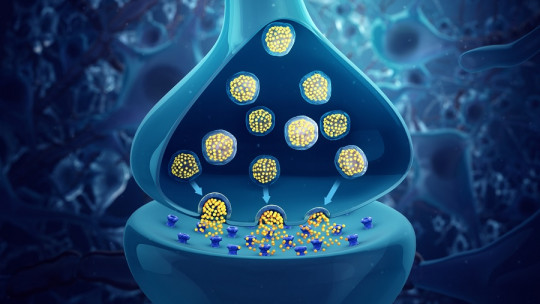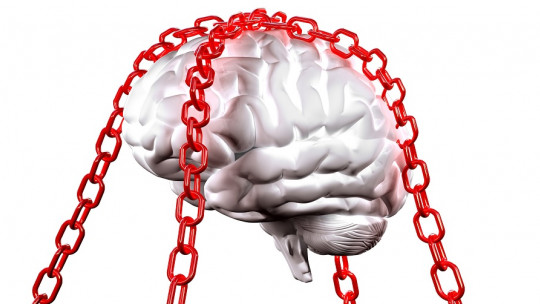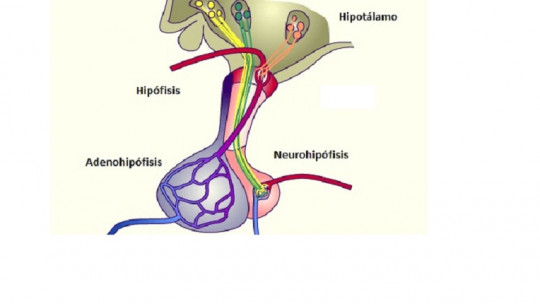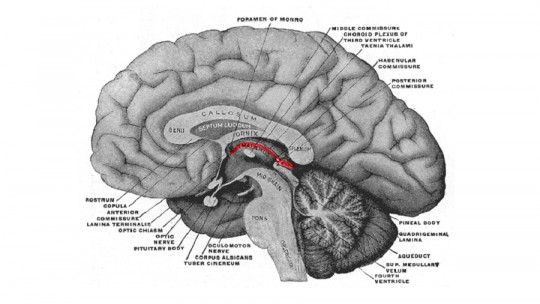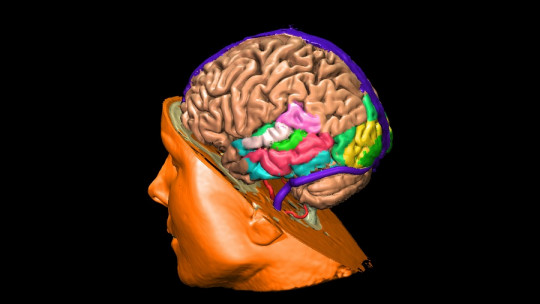
The controversy over the particularities it represents the differentiation between the brain of both sexes has been present in scientific research, both with the purpose of discerning whether there are discrepancies both in intellectual aptitudes and also in relation to the capacity for emotional processing.
Let’s see what the anatomical structures are, as well as what hormonal and neurotransmitter substances operate in a particular way, shaping the development of the male brain throughout the vital process.
Hormones and neurotransmitters involved in male brain circuits
These are the hormones and neurotransmitters involved in brain function.
1. Testosterone
It’s the hormone responsible for the development of primary sexual characteristics such as the maturation of the male reproductive organs, and also the secondary ones: body hair, the severity of the tone of voice or the muscle mass index.
Testosterone plays a main role in dominance behaviors and aggressiveness, it also activates the circuits of sexual behavior, as well as those destined to achieve objectives and fight against possible competitors to maintain a superior hierarchical position.
Besides, It is responsible for activating the functionality of the sweat glands which are responsible for the emission of the masculine odor (androstenedione).
2. Vasopressin
Apart from its main antidiuretic function, this hormone is involved at the brain level in the repertoire of social behaviors specifically in the protection and defense of personal territory and behaviors aimed at sexual mating.
3. Mullerian Inhibitory Substance (SIM):
The main function of this hormone is to act during the first months of pregnancy in order to eliminate all feminine physical characteristics from the future baby, as well as to enhance the maturation of those typically masculine.
Plays an important role in the development of exploratory behavior and to guide the interest of male infants in everything that involves movement and action.
4. Oxytocin
This substance can act as a hormone or as a neurotransmitter and is mainly associated with the establishment and regulation of social behaviors, emotional ties (marital or paternal) and the promotion of aspects such as trust or generosity.
It seems to be activated especially by physical contact and therefore plays an antagonistic role to the aggressive activation caused by testosterone. It is also involved in the development of empathic ability and to generate circuits of personal security or stress reduction.
5. Cortisol
This hormonal substance is what is secreted in response to stress, whose function is oriented towards the fight against the perception of potential threats, both physiological and emotional in different personal areas.
6. Dopamine
This substance is the main neurotransmitter involved in the search for pleasure, gratification the motivation for enjoyment and regulates the impulse to achieve a certain goal.
It is labeled a natural internal drug since it is secreted in large doses, generating a powerful and chemically addictive feeling of well-being when faced with a specific reward, similar to what can be obtained after the consumption of drugs such as cocaine or amphetamines. , For example.
What areas make up male brain functioning?
Multiple scientific investigations collected in the work of Brizendine (2010) carried out in recent decades have managed to identify a series of brain structures that are especially active in the brains of men
It seems that the high activity in such areas has been responsible for configuring and developing certain interests and objectives that ultimately guide the behavior of the male gender.
1. Medial Preoptic Area (APOM)
This area is responsible for the management of sexual activity and mating It has been observed that it represents an average size two and a half times larger in male individuals than in female individuals.
2. Temporal Parietal Union (TPJ)
This brain area regulates the capacity for cognitive empathy. This skill enables the individual to understand the other person’s situation analyzing it cognitively in order to be able to generate an effective solution to deal with it. Studies affirm that this ability is more associated with the male gender.
Unlike this, affective empathy consists of putting oneself in the other’s place, allowing one to emotionally identify with the feelings of the interlocutor. This last capacity seems to be more developed in women.
3. Dorsal Preliminary Nucleus (NPD)
This is the zone that regulates the area of defense of territory and personal (or family) status, articulating the response of anger to possible threats in this regard and activating the emotion of fear in the exercise of this protection role.
4. Amygdala
It is the structure in charge of activating the alarm signal for possible threats or personal dangers and is the main fear processing center.
It directs emotional impulses and is activated in men through testosterone, vasopressin and cortisol. Oxytocin, on the other hand, acts as an inhibitor of such emotional activation Research indicates that its size is larger in men than in women.
5. Cranial Cingular Zone (CCZ)
This area plays a main role in the regulation of social behavior, the formation of emotions and is responsible for learning and remembering the social image that an individual transmits to others.
Some studies link this area to the readjustment of facial expressions that men experience to minimize the facial gestures of their masculine emotional responses.
6. Ventral Tegmental Area (VTA)
This set of structures located in the center of the brain becomes the command center of motivational capacity being the main producer of the neurotransmitter dopamine.
Scientific findings have observed a higher level of activation in the male brain compared to the female brain.
7. Periacuedal Gray (GPA)
This area is involved in the regulation of pleasure and involuntary pain. It is especially active during sexual acts In the man.
8. Mirror Neuron System (SNE)
This neural network controls the capacity for emotional empathy. As mentioned before, Its function is less in men compared to women
9. Anterior Cingular Cortex (ACC)
This structure plays an important role in cognitive-emotional processing of possible threats serving as the center of the analysis of potential male emotional discomfort.
It acts in decision-making by assessing possible consequences, the fear of punishment, concerns in general, the fear response in relation to sexual behavior, mainly. It has been observed that its size is smaller in men since testosterone affects its functionality.
10. Prefrontal Cortex (PFC)
This structure is one of the most complex and recent in the human brain. In it, rational, logical and socially appropriate processing is carried out
It is responsible for focusing attention on the relevant aspects at each moment, cognitively analyzing the different options for decision-making and inhibiting the most primitive and maladaptive impulses. Research has concluded that this area matures earlier and appears to be larger in female subjects.
Stages in the hormonal and neurocognitive development of the male brain
What has been explained so far can become a guide that allows you to get a clearer idea about male brain functioning. Let’s see how the hormonal-anatomical operation is carried out in the different vital stages of man.
Childhood
A pronounced combination of secretion of the SIM hormone and testosterone in the first year of life enhances the activation of the brain circuits responsible for exploratory behavior of the environment, and the focusing of interest in all types of stimuli that involve muscular movement, especially with a more competitive than playful nature.
Subsequently, testosterone levels gradually decrease until the age of 11 years.
Puberty
From the age of 11, the production of testosterone and vasopressin increases by 20%, while SIM decreases. This entails a considerable increased activity of circuits of sexual behavior and defense of personal territory
Simultaneously, the activation of the areas that promote visual sexual attraction takes place, significantly increasing the functionality of the sense of smell in relation to the action of pheromones, as well as auditory perceptual sensitivity is modified
Greater activity has also been observed in the circuits that regulate the sleep cycle, progressively decreasing the volume of hours of daily night rest. This means that the main interests for the child are the maintenance of territory and personal hierarchy, social interaction and fixation on the body of the sex to which he feels attracted.
The latter involves an increase in sexual fantasies and masturbation behaviors. With everything stated, episodes of defiance of authority become more frequent and opposition to external norms.
Youth and early maturity
With stable high levels of testosterone, the high activity of the brain circuits that regulate both mating behavior and interest in sex, as well as the protection of personal territory and hierarchy, are maintained.
In heterosexual men, fixation is oriented towards the search for attractive female sexual partners and the surveillance of potential male competitors. In relation to the question of social hierarchy, the main goals at this stage are aimed at consolidate certain aspects related to social status such as a good professional position or a good salary.
Paternity
During the pregnancy stage of the couple, it has been observed in men how testosterone levels significantly decrease and the volume of prolactin increases. This fact causes a decrease in sexual desire and increases the activity of the circuits that help establish care behaviors and parent-child bonding.
Thus, the main goal is family protection from which the man focuses on his role as economic and emotional breadwinner and develops greater sensitivity to the baby’s basic needs.
Middle Maturity and Andropause
From approximately the fifth decade of life, testosterone levels decrease considerably, although a certain fixation on maintaining personal territory and sexual interest remains, but with less impulsive activation.
The most relevant objectives for men are associated with raising children and maintaining an adequate status at a professional level. The so-called andropause (the equivalent of menopause in men) entails a very considerable decrease in hormonal secretion in general, although it has been observed that oxytocin levels increase during these vital stages.
This leads the individual to focus on their own emotional well-being in different personal and social areas: health, professional career or family relationship (with respect to their partner, children and grandchildren). Due to the increased activity of this last hormone the activity of the circuits of affectivity and sentimentality increases reducing the general response of aggressiveness and competitiveness.
In conclusion
The above is intended to be an explanation of a series of scientific generalities that can serve as a guide when it comes to understanding in greater detail the type of biological brain predispositions associated with the male gender.
However, this is not intended to affirm that the influence of the environment and the contextual factors in which said individual develops do not have a determining influence on the way the behavior of each particular subject is finally externalized. Therefore, the information collected in the text should be taken as a set of indicative and theoretical data, avoiding drawing the conclusion that male behavior is only mediated by its biochemical or organic characteristics.
Thus, one of the greatest consensuses that the scientific community has managed to reach is to assume how the interaction between genetic or biological predispositions combined with external factors or environmental to ultimately shape the behavior and functioning of human beings.


